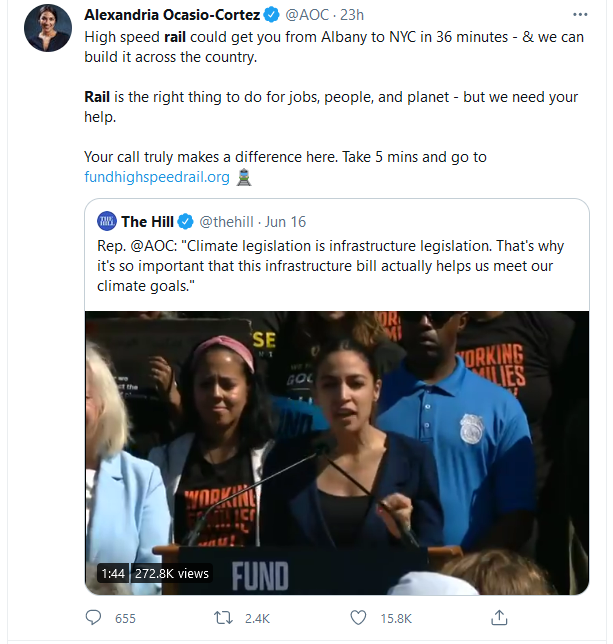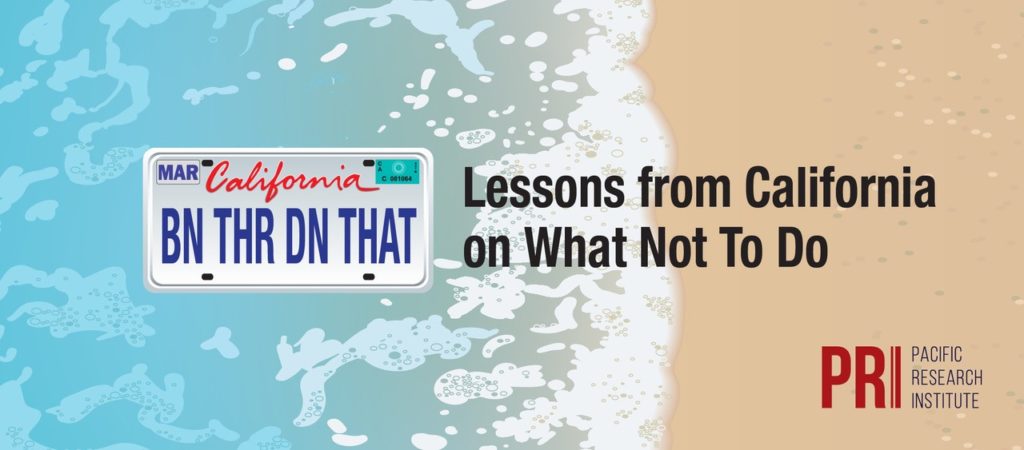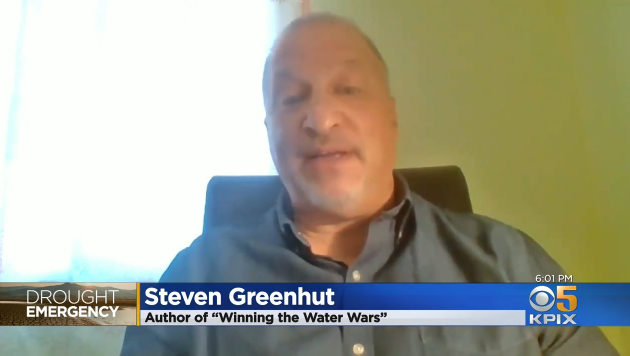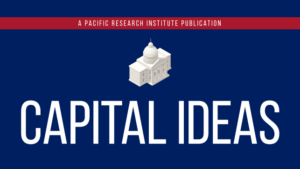 |
|
Inspired by California’s high-speed rail debacle, the Biden Administration and liberals in Congress have proposed spending tens of billions of dollars to build new high-speed rail networks nationwide. |
|
 |
|
 |
|
California Has “Been There, Done That” |
|
Californians have grown increasingly frustrated with its “train to nowhere,” which is tens of billions of dollars over budget and years behind schedule completing its initial 119-mile segment in the Central Valley. The project has been criticized by the nonpartisan state auditor’s office for its lack of oversight and poor contract management. Meanwhile, there is no realistic private-sector funding on the horizon to finance the rest of its ballooning construction costs. Exporting what has been called California’s “little engine that can’t” to the rest of the country will mean tens of billions of dollars wasted that could otherwise go to improving roads, highways, and commuter rail systems. |
|
How The California Blue Wave Could Derail Billions for Critical Infrastructure Projects Nationwide |
|
| “The project, which has gone through at least a half-dozen business plans, is the definition of a money pit. When voters approved it via 2008’s Proposition 1A, they were told it would cost $33 billion . . . The original projection has proved far too optimistic. Cost estimates have bounced around since 2008, landing at various times at $64 billion, $77 billion, $98 billion, and $117 billion before settling, for now, at $100 billion for a scaled-back version that links Los Angeles and San Francisco.”
— “The Low Spark of High-Speed Rail,” Kerry Jackson, City Journal, February 26, 2021 |
“We were also told that the project would receive significant funding from the federal government and substantial private investment. While we received a modest sum from Washington during the Obama era, it’s clear no more money is coming any time soon. The private sector has also kept its resources rather than throw them away on a failing venture.”
— “High-Speed Rail is Now California’s Runaway Train,” Kerry Jackson, San Diego Daily Transcript, March 14, 2018 |
| “But an independent analysis reports that the trip (between LA and San Francisco) will likely take at least 3:50 and maybe even 4:40. That’s only an hour less than it currently takes to drive a car — which has the advantage of being able to make a direct trip, not a ride from one train station to another — between the two cities.”
— “The California High-Cost Rail,” Right by the Bay, February 19, 2020 |
Read PRI’s Capital Ideas: “A Futuristic and Cheaper Alternative to High-Speed Rail” |
How Americans Can Avoid
|
|
| Instead of embracing very expensive and likely unrealistic national high-speed rail projects, there are private sector high-speed rail alternatives that Congress should consider.
· PRI’s Kerry Jackson, writing in City Journal, encourages policymakers to “consider a private-market alternative that could satisfy both practical and political considerations: an autonomous autobahn, where, according to Motor Trend writer Mark Rechtin, ‘vehicles equipped with self-driving technology run in platoons at a constant 120 mph.’” · Another private sector alternative to high-speed rail is “a hyperloop, a dynamic transportation system in which pods resembling railroad cars move smoothly through airtight steel tubes.” Elon Musk had been exploring a hyperloop project between Los Angeles and San Francisco for years. |
|
Visit www.pacificresearch.org/beentheredonethat |
|
 |
|


